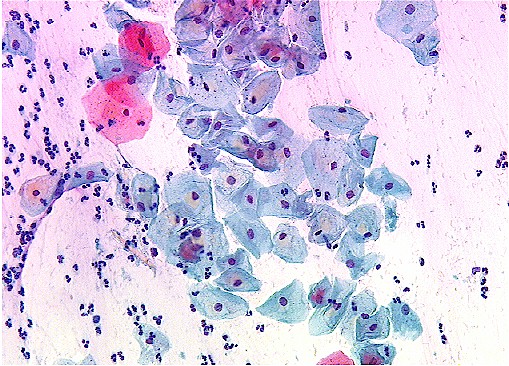Pap Smears
Pap Smear
Frequency · The Cervix · Obtaining a
Pap Smear · Interpreting Results and Managing Abnormalities · Human
Papilloma Virus · Colposcopy
1940's, Dr. Papanicolaou developed a technique for sampling the cells of the
cervix (Pap smear) to screen patients for cancer of the cervix. This technique has proven
to be very effective at not only detecting cancer, but the pre-cancerous, reversible
changes that lead to cancer.
While not originally designed to detect anything other than cancer, the Pap smear has
proven useful in identifying other, unsuspected problems. Generally, the
Pap smear detects about:
 So useful has the Pap smear become, it is considered an essential part of women's
health care. It is typically performed annually in sexually-active women of childbearing
age, although there are some important exceptions. So useful has the Pap smear become, it is considered an essential part of women's
health care. It is typically performed annually in sexually-active women of childbearing
age, although there are some important exceptions.
Because the Pap smear is a screening test, it can have both false positive and false
negative results. For this reason, it is important to have the test performed regularly. It is not likely that the Pap smear will miss an
important lesion time after time after time.
A number of forms of Pap smears have evolved. The standard,
traditional Pap technique involves smearing the specimen onto a glass
slide, which is then processed and read by a cytotechnologist. Newer
techniques involve changes in specimen handling (fluid medium) and
computer-assisted screening, all designed to improve accuracy.
Frequency of Pap Smears
Until recently, most experts recommended annual screening with Pap
smears for adult women. Based on the experience gained in annual
screening, some newer recommendations have evolved, to improve the
economic and medical efficiency of Pap smear screening.
Military
Obstetrics & Gynecology
© 2003, 2004, 2005, 2006 Medical Education Division,
Brookside Associates, Ltd.
All rights reserved
|

